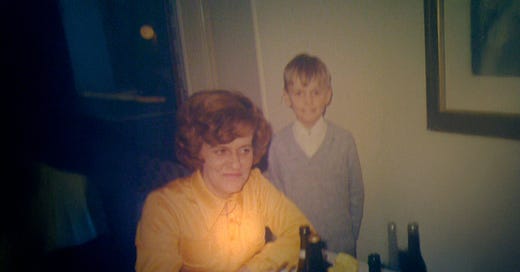I was born a twin, but most people never knew that.
My brother, Michael, died not long after we came into the world.
It wasn’t talked about much. Or at all, really.
But I knew. And I carried him quietly inside me.
When I was around five or six, I had an idea.
In Denmark, we raise a little flag on someone’s birthday, it’s a simple gesture, but it means something. That year, I suggested we lower the flag the day after mine. just for a moment. Just to acknowledge my brother.
My mother slapped me.
A flat hand across the face.
She never did it before, and she never did it again.
But in that moment, something froze in me.
Not just about my brother, but about truth, and feeling, and how some things simply… couldn’t be said.
That day, I learned that love could be too painful to name.
That even grief had rules.
And that my sensitivity, this place I live, would have to find other ways to speak.
Looking back, I think that was the beginning of my inner cartography.
Not a map of ideas or dreams, but a map of silence.
Where to step. What not to say. How to read the room before walking in.
Especially with my mother.
I was always emotional.
Still am.
But I learned early on that emotions could be too much for the people around me. So I became quiet, but highly attuned. I could feel the shifts in her voice before she knew she was upset. I’d sense the withdrawal coming like a change in weather.
That kind of awareness shapes you.
You become someone who watches everything, but keeps your own feelings tucked away.
Not gone. Just hidden. Like soft animals in tall grass.
Later, I found my voice with friends, especially girls.
They were more open. They didn’t flinch when I talked about feelings.
We’d sit for hours, sharing secrets.
Even as a kid, I was the one people came to when they were hurting.
It’s funny, how the thing you’re not allowed to express becomes the very thing you’re best at holding for others.
Later, art gave me more ways to speak.
Photography, painting, drawing, filmmaking, each one a doorway.
Each one a kind of permission.
Each one saying: you don’t have to explain it, just let it move.
But writing…
Writing is where the dam finally broke.
Because I’m dyslexic, writing used to feel impossible.
I had so much inside me, but no way to get it out.
Then AI came along, not as a replacement for my voice, but as a bridge.
And that changed everything.
Now I’ve written books. Dozens of them.
Letters, poems, reflections, blog posts like this one.
It still amazes me sometimes.
Not because I think it’s impressive.
But because it’s such a relief.
Like I’ve been holding my breath since I was a child, and now, finally, I can exhale.
Some days I write for hours.
Not out of ambition. But out of need.
It’s like I’m catching up on a lifetime of being quiet.
What I’ve learned is this:
The parts of us that didn’t get to speak never really leave.
They wait.
They live in the body. In the breath. In the tension you can’t explain.
They shape how we love, how we work, how we see ourselves.
But they also become gifts.
They become intuition. Sensitivity. Art.
They become the very doorway through which other people find safety.
And when we finally let those parts speak, really speak, something opens.
In us. Around us.
Because expression is not just a personal act.
It’s a collective one.
A Place to Begin
If this touches something in you, here’s a simple way to start.
Find a quiet moment.
Close your eyes.
Place a hand on your heart, or your belly, and ask:
“Is there a part of me that still wants to speak?”
Don’t try to force an answer.
Just listen.
Maybe it will come as a word.
Or an image.
Or nothing at all, just a soft ache that says, I’m still here.
You might write to it. Or draw. Or move. Or cry.
Whatever comes, let it.
Because once a silenced part feels seen, it doesn’t need to shout anymore.
It just wants to be met with kindness.
This is the heart of Inner Cartography:
not fixing yourself, but listening more deeply.
Not becoming better, but becoming more whole.
And maybe, just maybe, becoming the place where the silence ends.




